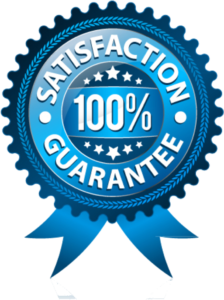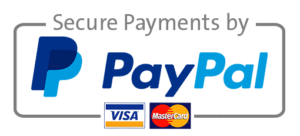What is the optimal solution to the problem described in Table 10-6?
71) What is the optimal solution to the
problem described in Table 10-6?
A) X1 = 50; X2 = 0
B) X1 = 30; X2 = 20
C) X1 = 20; X2 = 30
D) X1 = 25; X2 = 25
E) X1 = 0; X2 = 25
72) Goal programming and linear
programming differ in that
A) in LP, the objective function is
maximized or minimized, while in goal programming, the deviation between goals
and possible achievement is minimized.
B) slack variables are used in LP, while
deviational variables are used in goal programming.
C) deviational variables have positive
objective function coefficients in goal programming, but slack variables have 0
coefficients in LP.
D) All of the above
E) None of the above
73) A goal programming problem had two
goals (with no priorities assigned). Goal number 1 was to achieve a cost of
$3,600 and goal number 2 was to complete the task in 400 hours or fewer. The
optimal solution to this problem resulted in a cost of $3,600 and a completion
time of 420 hours. What was the value for the objective function for this goal
programming problem?
A) 400
B) -400
C) 20
D) 0
E) None of the above
74) Agile Bikes has manufacturing plants
in Salt Lake City, Dallas, and Chicago. The bikes are shipped to retail stores
in Los Angeles, New York, Miami, and Seattle. Information on shipping costs,
supply, and demand is given in the following table:
.jpg”>
What type of mathematical programming is
required to solve this problem?
A) Linear programming
B) Integer programming
C) Mixed-integer programming
D) Zero-one integer programming
E) Nonlinear programming
Table 10-7
The Elastic Firm has two products coming
on the market: Zigs and Zags. To make a Zig, the firm needs 10 units of product
A and 15 units of product B. To make a Zag, they need 20 units of product A and
30 units of product B. There are only 2,000 units of product A and 3,200 units
of product B available to the firm. The profit on a Zig is $4 and on a Zag it
is $6. Management objectives in order of their priority are:
(1) Produce exactly 50 Zigs.
(2) Achieve a target profit of at least
$750.
(3) Use all of the product B available.
Let X1 = number of Zigs, X2 = number of Zags.
d1- = underachievement of Zig goal
d1+ = overachievement of Zig goal
d2- = underachievement of profit target
d2+ = overachievement of profit target
d3- = unused product B
d3+ = additional amount of product B needed
75) In the goal programming problem
described in Table 10-7, what is the objective function?
A) Min: P1d1- + P1d1+ + P2d2+ + P2d2- + P3d3- + P3d3+
B) Min: P1d1- + P1d1+ + P2d2+ + P3d3+
C) Min: P1d1- + P1d1+ + P2d2- + P3d3-
D) Min: P1d1- + P2d2- + P3d3-
E) Min: P1d1+ + P2d2+ + P3d3+
76) In the goal programming problem
described in Table 10-7, how is the goal of producing exactly 50 Zigs expressed?
A) X1 + d1+ = 50
B) X1 – d1+ = 50
C) X1 + d1- = 50
D) X1 – d1- = 50
E) X1 + d1- – d1+ = 50
77) In the goal programming problem
described in Table 10-7, how is the goal of achieving a target profit of at
least $750 expressed?
A) X1 + X2+ d2- = 750
B) X1 + X2+ d2– d2+ = 750
C) 4X1 +6 X2+ d2-= 750
D) 4X1 + 6X2+ d2– d2+ = 750
E) X1 + X2- d2+ = 750
78) In the goal programming problem
described in Table 10-7, how is the goal of the use of all product B available
expressed?
A) 15X1 + 30X2+ d3– d3+ = 3200
B) X1 + X2+ d3– d3+ = 3200
C) X1 + X2+ d3-= 3200
D) 15X1 + 30X2+ d3-= 3200
E) 15X1 + 3-X2- d3+ = 3200
79) In the goal programming problem
described in Table 10-7, what is the optimal solution?
A) X1 = 75 + X2= 91.67
B) X1 = 91.67 + X2= 50
C) X1 = 50 + X2= 75
D) X1 = 50 + X2= 91.67
E) X1 = 75 + X2= 50
80) Classify the following problems as to
whether they are pure-integer, mixed-integer, zero-one, goal, or nonlinear
programming problems.
(a) Maximize Z = 5 X1 + 6 X1 X2 + 2 X2
Subject to: 3
X1 + 2 X2 ? 6
X1 + X2 ? 8
X1, X2 ? 0
(b) Minimize Z = 8 X1 + 6 X2
Subject to: 4
X1 + 5 X2 ? 10
X1 + X2 ? 3
X1, X2 ? 0
X1, X2 = 0 or 1
(c) Maximize Z = 10 X1 + 5 X2
Subject to: 8
X1 + 10 X2 = 10
4 X1 + 6 X2 ? 5
X1, X2 integer
(d) Minimize Z = 8 X12 + 4 X1 X2 + 12 X22
Subject to: 6
X1 + X2 ? 50
X1 + X2 ? 4071) What is the optimal solution to the
problem described in Table 10-6?A) X1 = 50; X2 = 0B) X1 = 30; X2 = 20C) X1 = 20; X2 = 30D) X1 = 25; X2 = 25E) X1 = 0; X2 = 2572) Goal programming and linear
programming differ in thatA) in LP, the objective function is
maximized or minimized, while in goal programming, the deviation between goals
and possible achievement is minimized.B) slack variables are used in LP, while
deviational variables are used in goal programming.C) deviational variables have positive
objective function coefficients in goal programming, but slack variables have 0
coefficients in LP.D) All of the aboveE) None of the above73) A goal programming problem had two
goals (with no priorities assigned). Goal number 1 was to achieve a cost of
$3,600 and goal number 2 was to complete the task in 400 hours or fewer. The
optimal solution to this problem resulted in a cost of $3,600 and a completion
time of 420 hours. What was the value for the objective function for this goal
programming problem?A) 400B) -400C) 20D) 0E) None of the above74) Agile Bikes has manufacturing plants
in Salt Lake City, Dallas, and Chicago. The bikes are shipped to retail stores
in Los Angeles, New York, Miami, and Seattle. Information on shipping costs,
supply, and demand is given in the following table:.jpg”>What type of mathematical programming is
required to solve this problem?A) Linear programmingB) Integer programmingC) Mixed-integer programmingD) Zero-one integer programmingE) Nonlinear programmingTable 10-7The Elastic Firm has two products coming
on the market: Zigs and Zags. To make a Zig, the firm needs 10 units of product
A and 15 units of product B. To make a Zag, they need 20 units of product A and
30 units of product B. There are only 2,000 units of product A and 3,200 units
of product B available to the firm. The profit on a Zig is $4 and on a Zag it
is $6. Management objectives in order of their priority are:(1) Produce exactly 50 Zigs.(2) Achieve a target profit of at least
$750.(3) Use all of the product B available.Let X1 = number of Zigs, X2 = number of Zags.d1- = underachievement of Zig goald1+ = overachievement of Zig goald2- = underachievement of profit targetd2+ = overachievement of profit targetd3- = unused product Bd3+ = additional amount of product B needed75) In the goal programming problem
described in Table 10-7, what is the objective function?A) Min: P1d1- + P1d1+ + P2d2+ + P2d2- + P3d3- + P3d3+B) Min: P1d1- + P1d1+ + P2d2+ + P3d3+C) Min: P1d1- + P1d1+ + P2d2- + P3d3- D) Min: P1d1- + P2d2- + P3d3- E) Min: P1d1+ + P2d2+ + P3d3+76) In the goal programming problem
described in Table 10-7, how is the goal of producing exactly 50 Zigs expressed?A) X1 + d1+ = 50B) X1 – d1+ = 50C) X1 + d1- = 50D) X1 – d1- = 50E) X1 + d1- – d1+ = 5077) In the goal programming problem
described in Table 10-7, how is the goal of achieving a target profit of at
least $750 expressed?A) X1 + X2+ d2- = 750B) X1 + X2+ d2– d2+ = 750C) 4X1 +6 X2+ d2-= 750D) 4X1 + 6X2+ d2– d2+ = 750E) X1 + X2- d2+ = 75078) In the goal programming problem
described in Table 10-7, how is the goal of the use of all product B available
expressed?A) 15X1 + 30X2+ d3– d3+ = 3200B) X1 + X2+ d3– d3+ = 3200C) X1 + X2+ d3-= 3200D) 15X1 + 30X2+ d3-= 3200E) 15X1 + 3-X2- d3+ = 320079) In the goal programming problem
described in Table 10-7, what is the optimal solution?A) X1 = 75 + X2= 91.67B) X1 = 91.67 + X2= 50C) X1 = 50 + X2= 75D) X1 = 50 + X2= 91.67E) X1 = 75 + X2= 5080) Classify the following problems as to
whether they are pure-integer, mixed-integer, zero-one, goal, or nonlinear
programming problems.(a) Maximize Z = 5 X1 + 6 X1 X2 + 2 X2 Subject to: 3
X1 + 2 X2 ? 6 X1 + X2 ? 8 X1, X2 ? 0(b) Minimize Z = 8 X1 + 6 X2 Subject to: 4
X1 + 5 X2 ? 10 X1 + X2 ? 3 X1, X2 ? 0 X1, X2 = 0 or 1(c) Maximize Z = 10 X1 + 5 X2 Subject to: 8
X1 + 10 X2 = 10 4 X1 + 6 X2 ? 5 X1, X2 integer(d) Minimize Z = 8 X12 + 4 X1 X2 + 12 X22 Subject to: 6
X1 + X2 ? 50 X1 + X2 ? 40




